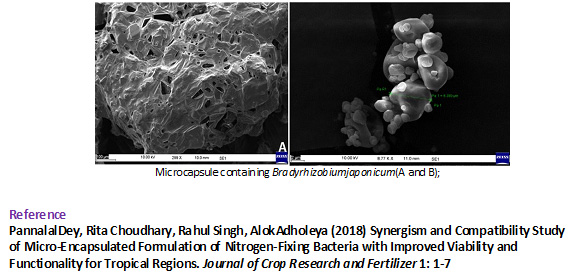Next Generation Micro-Encapsulation Technology for improving shelf life of commercially relevant non-sporulating bacteria
The Microencapsulation technology provide solution for the issue of reduced viability
of non-sporulating bacteria (that is known to have a lower shelf life) during storage,
transport and application. Non-sporulating bacteria are those that are unable
to form spores (exo-spores or endo-spores). In comparison to sporulating bacteria
(Bacillus sp.), non-sporulating bacteria (Bradyrhizobium, Rhizobia, Azospirillum)
are not resistant to stress conditions such as temperature and humidity. In high
temperatures, non-sporulating organisms become low efficient, which is one of the
major constraints in sustaining shelf life of these organisms for
longer durations as a microbial inoculant based productivity.
This next generation microencapsulation technology of TERI for nodulating rhizobacteria
(non-sporulating bacteria) species using natural polysaccharides will lead to
desired size of microspheres loaded with microbes for seed coating applications
with higher shelf life. This will also increase the survivability and functionality
of the microbial strains and in its storage condition in different temperature (10-40°C)
as well.
